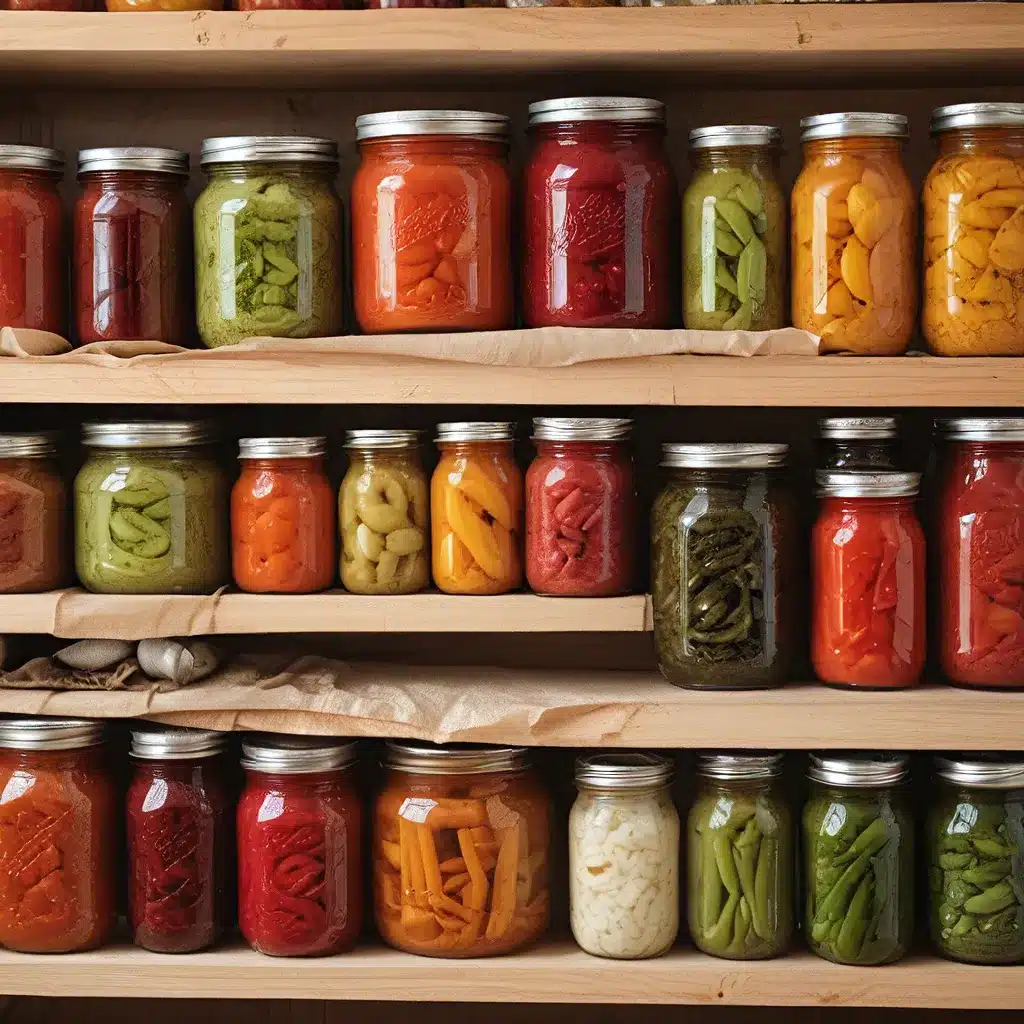
As a self-proclaimed homesteading enthusiast, I’ve always had a deep fascination with the art of food preservation. Growing up, I remember my grandparents’ sprawling root cellar, filled to the brim with jars of homemade pickles, relishes, and canned goods – a true testament to their hard work and dedication to providing for their family. These days, with the ever-increasing cost of groceries and the desire to become more self-sufficient, I’ve found myself drawn to the same principles of preserving the harvest.
Mastering the Art of Canning
One of the most traditional and time-honored methods of food preservation is canning. The idea of canning may seem daunting at first, but with the right tools and a bit of practice, it can quickly become a rewarding and empowering skill. I’ll never forget the first time I canned my own batch of tomatoes – the sense of accomplishment and the knowledge that I was providing for my family was truly unparalleled.
As the folks at Seed to Pantry suggest, canning is not only a cost-effective way to preserve the harvest, but it also allows you to enjoy the fresh, vibrant flavors of summer all year round. The process of canning involves sealing jars or cans with a tight seal, which prevents the growth of harmful bacteria and allows the food to be stored for an extended period.
One of the keys to successful canning is to pay close attention to the proper techniques and safety precautions. It’s essential to use the right equipment, such as a pressure canner or a water bath canner, and to follow the recommended processing times and temperatures. Seed to Pantry has some great resources on the basics of canning, from choosing the right jars to properly sanitizing your equipment.
The Joys of Dehydration
While canning is a fantastic way to preserve the harvest, it’s not the only option. Another method that I’ve come to love is dehydration. Dehydrating fruits, vegetables, and even meats can be a game-changer when it comes to building a well-stocked pantry.
As Seed to Pantry explains, dehydrating allows you to create your own dried snacks, ingredients, and even emergency food supplies. The process of dehydration removes the moisture from the food, which in turn prevents the growth of mold and bacteria, allowing for long-term storage.
One of the things I love about dehydration is the sheer variety of foods you can preserve. From spinach to grapes, the possibilities are endless. The Purposeful Pantry has some great tips on dehydrating spinach, which can be a fantastic addition to soups, stews, and even smoothies.
And as for those grape-lovers out there, Seed to Pantry has a fantastic guide on how to dehydrate your own raisins. The process is surprisingly simple, and the end result is a delightfully sweet and tangy treat that you can enjoy year-round.
The Versatility of Freezing
While canning and dehydrating are both excellent methods of preservation, there’s one technique that I find myself relying on more and more: freezing. Freezing is a versatile and convenient way to save the harvest, and it’s a method that I’ve been able to really hone over the years.
As the Homesteading Family blog points out, having a well-organized freezer system can be a game-changer when it comes to managing your food supply. I’ve found that designating specific freezers for different types of meat, dairy, and produce has helped me keep everything neatly organized and easy to access.
One of the things I love about freezing is the sheer convenience it offers. With a well-stocked freezer, I can whip up delicious, home-cooked meals in no time, without having to worry about sourcing fresh ingredients. And let’s not forget about the economic benefits of freezing – being able to take advantage of bulk discounts or seasonal prices is a surefire way to save money in the long run.
Building a Resilient Pantry
As I’ve dove deeper into the world of food preservation, I’ve come to realize that it’s not just about the practical benefits of having a well-stocked pantry. It’s about building resilience and taking control of our food supply in an increasingly uncertain world.
The Homesteading Family blog has been a fantastic resource for me, showcasing the impressive food storage systems of a family of 13. Their dedication to preserving the harvest and planning for the future is truly inspiring, and it’s a reminder that the skills we develop today can have a lasting impact on our families and communities.
Whether it’s canning, dehydrating, or freezing, the act of preserving the harvest is more than just a practical skill – it’s a form of self-empowerment and a way to take control of our own food security. And who knows, maybe one day I’ll be the one with a sprawling root cellar, full of jars and baskets brimming with the fruits of my labor. But for now, I’m just happy to be on this journey, learning and growing alongside others who share my passion for preserving the pantry.

